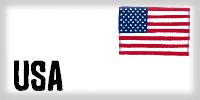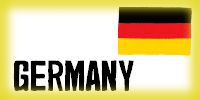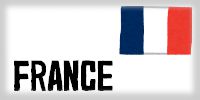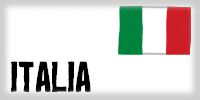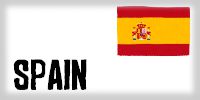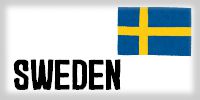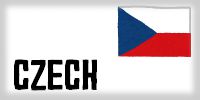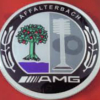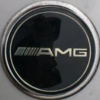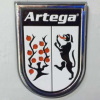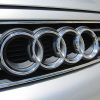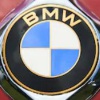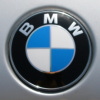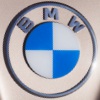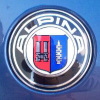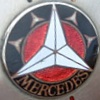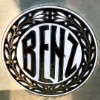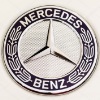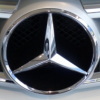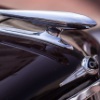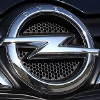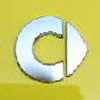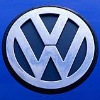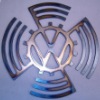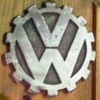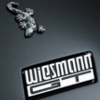|
Note: If you want to see the car photos of each brand, please tap or click the brand name.
|
AMG
|
The AMG emblem logo depicts the apple tree and the clean river in the left side, and depicts the cam, valve and valve spring in the other side. The apple tree and the clean river are derived from the coat of arms of the city of Affalterbach, Germany, where the current headquarters and development base of AMG are located. The cam, valve and valve spring symbolizes outstanding engine development and manufacturing technology.
|
Artega
|
The Artega emblem logo is derived from the coat of arms of the town of Delbrück, where the Artega factories and offices are located. The black dog means the guardian deity. The tree and rose hips is a specialty of Delbrück. The ten red fruits of the rose hips mean that Delbrück is divided into 10 districts.
|
Audi
|
The Audi emblem logo "Four Silver Rings" or "Four Ceiling Rings" represents the history of the four automobile manufacturers united. When the Great Depression badly hurt the German car manufacturing industry, the four different automobile manufacturers joined forces to create a consortium that would be called Auto Union AG in 1932. This emblem logo signs the association of the brand Audi with others. The initial ring from at the left side represents Audi, the next represents DKW, the third is Horch, then the fourth ring is Wanderer. The current Audi emblem logo was began appearing on production models since 1995. The four rings emblem logo looks like inspired by the Olympic rings and the Olympic Committee eventually dragged Audi to International Trademark Court in 1995. The court ruled in favor of Audi so no changes were required.
|
BMW
|
The BMW emblem logo is derived from the coat of arms of the state of Bavaria in southern Germany. This first BMW emblem logo, which was registered in the German Imperial Register of Trademarks on October 5th, 1917, retained the basic design of the old corporate logo for Rapp Motorenwerke.
On the other hand, many people believe the BMW emblem logo is a stylized spinning airplane propeller. The BMW ad in 1929 depicts the BMW emblem logo, which was painted with the blue and white colored quadrants in a spinning airplane propeller. The interpretation that the emblem logo expresses a propeller has endured ever since. Then, the ad in 1942, BMW linked the propeller to the emblem logo again. This ad was trying to promote the engine of an airplane built by BMW. For a long time, BMW made little effort to correct the myth that the origin is an airplane propeller.
|
|
BMW ALPINA
|
The ALPINA emblem logo was born in 1967, depicts a Weber dual carburettor in the left side, and depicts a crankshaft in the other side. This type of carburettor was a symbol of tuning in the 1960s. At the time of its founding, ALPINA worked on carburettors and crankshafts to improve the efficiency of BMW engines. Red of background color means the endless passion, and blue means the intelligence and high ambition.
The ALPINA's original products consisted of typewriters, though ALPINA gradually moved into automotive products. ALPINA's origins can be traced back to 1962 when the company founder Burkard Bovensiepen developed a Weber dual carburettor for BMW 1500. This engine with a dual carburettor was received praise not only from the automotive press, but also from Paul G. Hahnemann, head of BMW sales. Then BMW officially certified the ALPINA's product in 1964.
|
MAYBACH
|
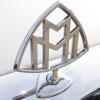
|
|
|
|
|
|
|
|
|
|
The MAYBACH emblem logo is derived from the initial of "Maybach-Motorenbau". "Motorenbau" means the engine structure in English. There is an opinion, that MAYBACH emblem logo looks similar to Adolf Hitler's swastika sign, because of M's sharp angles and confident lines.
Maybach-Motorenbau was founded in 1909 by Wilhelm Maybach and his son Carl Maybach. The company was originally a subsidiary of Luftschiffbau Zeppelin and was itself known as Luftfahrzeug-Motorenbau until 1912. Maybach contributed to the German Reich effort in World War II by producing the engines for many mobile artilleries and tanks such as Jagdpanther, Panther and Tiger tanks with the Maybach HL230. It is also famous for manufacturing the engine of a type of rigid airship "Zeppelin".
In 1960, MAYBACH was acquired by Daimler-Benz and shelved for the next 37 years. In 1997, MAYBACH was revived by Mercedes-Benz and debuted a concept car under the name "Mercedes-Benz Maybach". After that, MAYBACH was revived as a German luxury brand in 2002.
|
Mercedes-Benz
|
The Mercedes-Benz emblem logo "three-pointed star" represents the company's ambition for the widespread use of Daimler engines in transportation in three fields: land, sea and air.
The engineer Gottlieb Daimler invented the first practical automobile to be powered by an internal-combustion engine with Carl Benz in 1886. The history of Mercedes-Benz begins in 1890, when Gottlieb Daimler originally founded DMG: Daimler-Motoren-Gesellschaf. Meanwhile, Carl Benz began Benz & Cie. Rheinische Gasmotorenfabrik in 1883. In 1900, after Daimler passed away, DMG was taken over by chief engineer Wilhelm Maybach, and the first car was developed. Unfortunately, most drivers were no longer able to afford fuel, because of the war started in Germany. Mercedes was registered as a trademark in 1902.
In 1909, the first three-pointed star was registered as a trademark. This design is derived from the 1872 postcard that Daimler sent to his wife. The three-pointed star depicted in this postcard shows the location of his house in Germany with the explanation that one day the star would shine over his factory and bring prosperity. When the merger between DMG and Benz & Cie occured in 1926, the corporate logos were combined to become a laurel wreath surrounding a three-pointed star. This laurel wreath surrounding had been used in Benz since 1909.
|
OPEL
|
The OPEL emblem logo is derived from "Blitz", which is a German word meaning lightning in English. Opel had a number of different emblem logos throughout the history. The "Blue eye" design was introduced since 1910. This design actually represented a rigid airship "Zeppelin" and does not represent the shape of the eyes. Next, Zeppelin-shaped hood ornament was introduced since 1937. A stylised Zeppelin adorned a symbol of human innovation and technical progress. Numerous variations were created, in the 1950s always with the dorsal fin like a wing of aircraft. Then OPEL uses the current "Blitz" design since 1964.
OPEL was founded as a sewing machine manufacturer by Adam Opel in 1862 in Rüsselsheim am Main. OPEL began manufacturing bicycles in 1886 and produced its first automobile in 1899. After listing on the stock market in 1929, General Motors took a majority stake in OPEL and then full control in 1931. When OPEL was controlled by General Motors, OPEL cars were sold under the BUICK brand in North America and the VAUXHALL brand in the United Kingdom. In March 2017, Groupe PSA agreed to acquire OPEL from General Motors.
|
PORSCHE
|
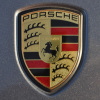
|
|
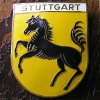
|

|
|
|
|
Reference (*1)
|
Reference (*2)
|
|
*1 coat of arms Stuttgart, *2 coat of arms Württemberg
The PORSCHE emblem logo is inspired by two designs of the coat of arms. The outside design is derived from the coat of arms of the state of Württemberg, former West Germany. The jumping horse in the center is derived from the coat of arms of the city of Stuttgart, where the headquarters of PORSCHE is located. Stuttgart was once the capital of Württemberg, but is now the capital of the merged state of Baden-Württemberg. "Stutt" of Stuttgart is derived from the German word "Stuten" which means a mare in English, and "gart" is derived from the German word "garten" which means a garden in English. So Stuttgart means "mare's garden" in English.
Porsche (official company name: Dr. Ing. h. c. F. Porsche GmbH) was founded in 1931 by Czech engineer Ferdinand Porsche, the company offered motor vehicle development work and consulting, but did not build any cars under its own name. During World War II, the company produced several designs for heavy tanks.
There are three different theories of the emblem logo's origin. In 1951, Americans side believe that Ferdinand Porsche's son, Ferry, drew the sketch on a napkin during a meal with Max Hoffman, the American PORSCHE distributor at a New York restaurant. After bringing the design back to Germany, Ferry had it polished up and adopted as the own corporate logo. On the other hand, Germans side believe that the PORSCHE emblem logo was designed by Franz Xaver Reimpiess, who had already designed the Volkswagen corporate logo in 1937. There is also the possibility that both claims are correct, the 3rd theory is that Franz Xaver Reimpiess polished up the design which Ferry brought back from America. Either way, the first PORSCHE emblem logo was adopted on the horn button of PORSCHE 356 Speedster at the end of 1952, then it was also adopted on the bonnet handle in November 1954.
|
smart
|
The smart emblem logo represents the letter "c", standing for the car's "compact", "cute" and a arrow pointing in the right direction, which is meant to symbolize "forward thinking". The emblem logos on the cars uses the silver arrow in most cases, but the corporate logo always uses the yellow arrow.
The headquarters is located in Böblingen, Germany.
|
Volkswagen
|
The Volkswagen emblem logo composes of the company's initials, "V" placed over "W". The first corporate logo was initials surrounded by stylized swastika wings (1937 - 1938), The second corporate logo was initials surrounded by the stylized cogwheel (1938 - 1945). How that the VW emblem logo is derived to be remains a mystery, the first corporate logo design was created by Porsche employee Franz Xaver Reimspeiss at an office competition in 1937, this possibility is the most supported. According to another theory, the corporate logo was designed by Austrian industrial graphic designer Nikolai Borg or German artist Martin Freyer. The current design was officially registered as a trademark in 1948, and the emblem logo was began appearing on production models for export since 1949.
Only the Australian version of the Beetle could add the hood ornament. However, because the injuries caused by the hood ornament, the road safety authority requested have to remove the hood ornaments from vehicles for the safety of the public. So, the original ornament is very rare and there are many replicas on the market.
The brand was created by the chancellor Adolf Hitler's idea. Hitler wanted to build the Autobahn and make vehicles more affordable for people. The idea was born in 1933, when Hitler visited an auto show in Berlin. Impressed by Ferdinand Porsche's design capabilities and idea, Hitler invited Porsche to launch the production of "People's Car", and KdF (Kraft durch Freude in German, "Strength through Joy" in English) was involved in this project. This car project was just one of the many KdF programs. Prototypes of the car called the "KdF-Wagen" appeared from 1938. Volkswagen was given to mean "People's Car" in German.
At the same time, the predecessor of Volkswagen, "Gesellschaft zur Vorbereitung des Deutschen Volkswagens GmbH" was founded in 1937 and changed its name to "Volkswagenwerk GmbH" in 1938. After World War II, the damaged factory was rebuilt under the supervision of the British Army. The company name was changed to Volkswagen, and the KdF-Wagen was also changed to Volkswagen Type 1. The re-establishment of the line was successfully rebuilt and the factory produced more than 1000 cars a month in 1946.
|
Wiesmann
|
The Weismann emblem logo represents a silver gecko. The company's philosophy is to create a car that sticks to the road like a gecko sticks to a wall.
Wiesmann is a German automobile manufacturer that specialises in hand-built custom convertibles. The company was founded by brothers, engineer Martin Wiesmann and businessman Friedhelm Wiesmann in 1988. The business was temporarily closed in May 2014, but according to the company's website, is set to resume with a new model in 2020. However, as of January 2021, the business has not yet resumed.
|

 English -
English - 
